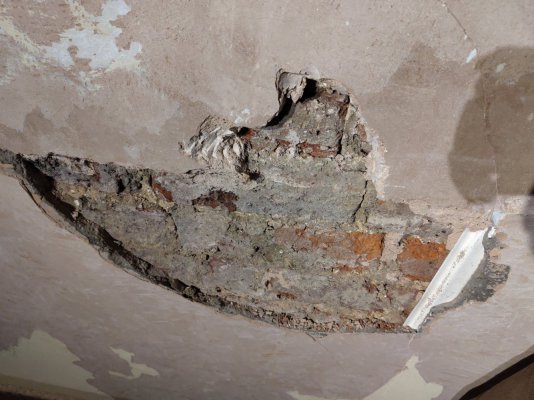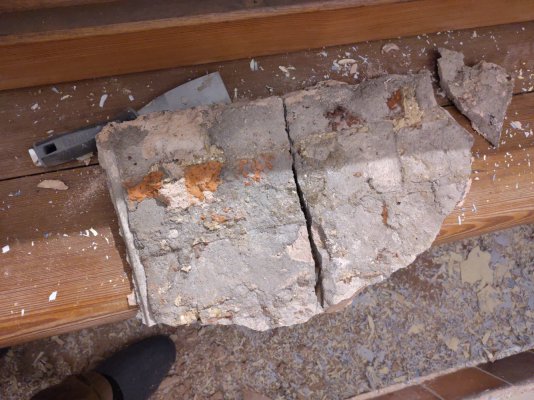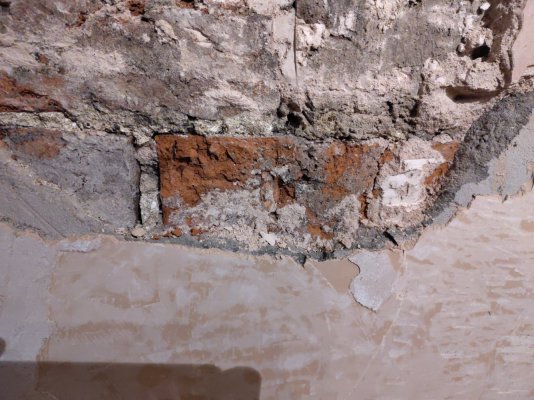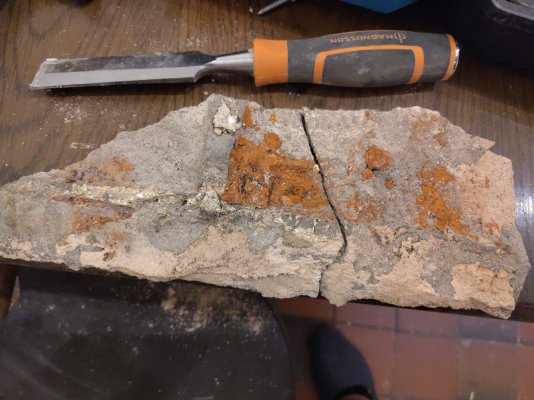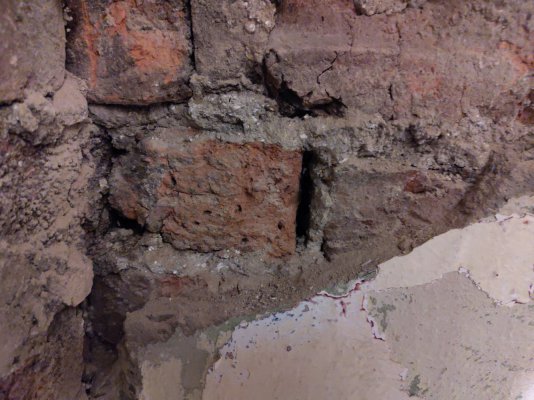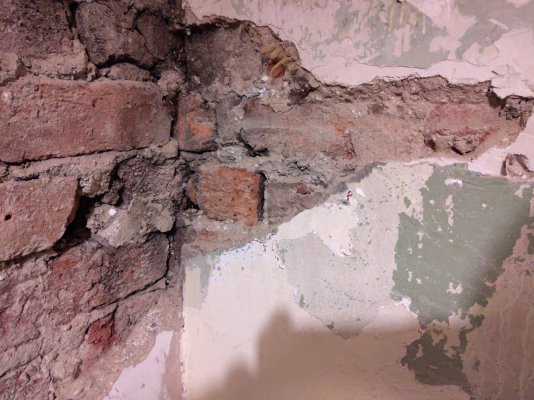benoliver999
Member
- Messages
- 6
- Location
- Sheffield, UK
We moved into our place about a year ago, it's a ~180 year old red brick terrace. The house is on a hill that slopes down from the front to the back, so the lower-ground floor has the cellar at the front of the house (below the front door, buried underground), and the back of the house has the kitchen with a back door that opens onto the garden. The 'slope' is actually a tunnel between the two terraces, with a flying freehold overhead.
The other day we decided to peel off some flaking paintwork in the kitchen, with the goal of stripping it back and re-doing the paint job. It's never that simple is it?
We started peeling the paper off the exterior wall that's on the side of the house (the side with the slope on). All gypsum, but below about 1m it's clear that the damp-proof guys have been in and also added cement. This was done about 10 years ago from what I can tell on the paperwork. It's rock hard and the paint really doesn't want to come off.
Then we spotted damp patches in the gypsum above the cement layer - almost like it's wicked upwards from behind the cement. I stuck a chisel in and sure enough it went through like sand, and it wasn't much work to get rid of the wet gypsum. The brickwork behind it is quite degraded.
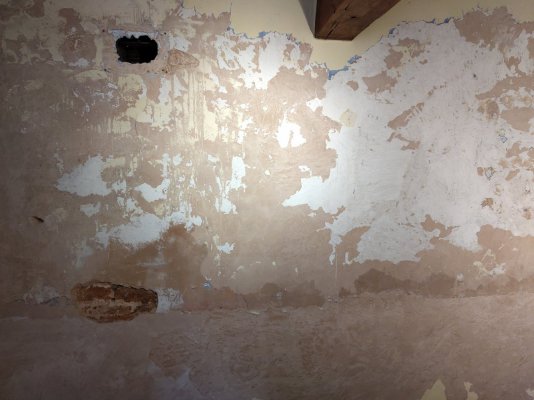
The brickwork behind the gypsum looks a little ropey
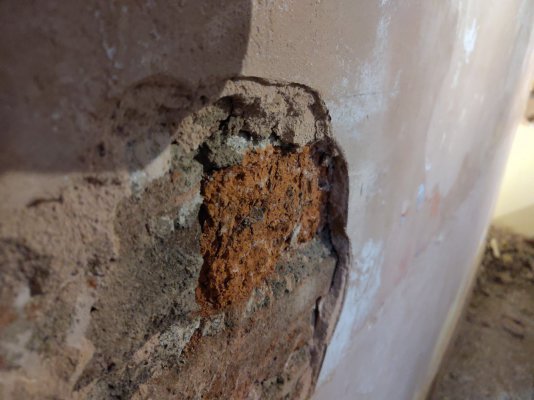
Outside, in the tunnel, a lot of the bricks look new-ish, but it's all been pointed with cement. Presumably this was done 10 years ago as part of the 'damp proofing'.
It seems to be like a classic case of hiding damp rather than tackling the problem. One of the air bricks was also sealed, which I've now unblocked.
I guess my questions are -
Is it worth trying to take the cement off or can I get away with just lime plastering the top half (and maybe getting the outside repointed in lime)? The cement is rock hard and it's not coming off easily. I'm worried about damaging the bricks.
If I manage to get it all off and replaster in lime, how urgently do I need to look into repointing the outside? Do I hang fire on the plaster until the repointing is done?
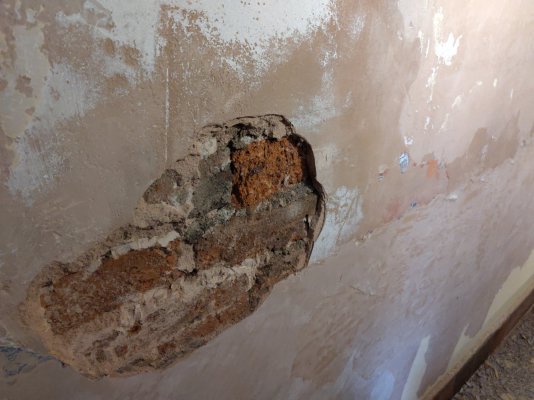
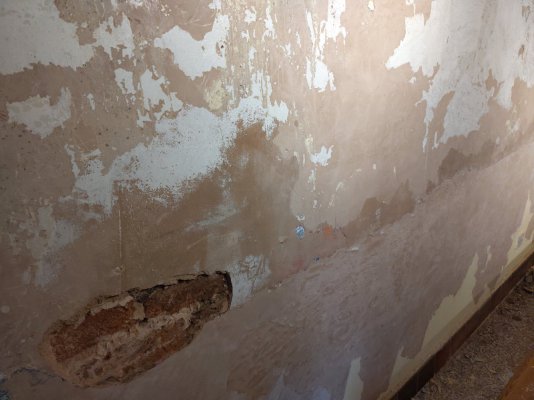
The other day we decided to peel off some flaking paintwork in the kitchen, with the goal of stripping it back and re-doing the paint job. It's never that simple is it?
We started peeling the paper off the exterior wall that's on the side of the house (the side with the slope on). All gypsum, but below about 1m it's clear that the damp-proof guys have been in and also added cement. This was done about 10 years ago from what I can tell on the paperwork. It's rock hard and the paint really doesn't want to come off.
Then we spotted damp patches in the gypsum above the cement layer - almost like it's wicked upwards from behind the cement. I stuck a chisel in and sure enough it went through like sand, and it wasn't much work to get rid of the wet gypsum. The brickwork behind it is quite degraded.

The brickwork behind the gypsum looks a little ropey

Outside, in the tunnel, a lot of the bricks look new-ish, but it's all been pointed with cement. Presumably this was done 10 years ago as part of the 'damp proofing'.
It seems to be like a classic case of hiding damp rather than tackling the problem. One of the air bricks was also sealed, which I've now unblocked.
I guess my questions are -
Is it worth trying to take the cement off or can I get away with just lime plastering the top half (and maybe getting the outside repointed in lime)? The cement is rock hard and it's not coming off easily. I'm worried about damaging the bricks.
If I manage to get it all off and replaster in lime, how urgently do I need to look into repointing the outside? Do I hang fire on the plaster until the repointing is done?



